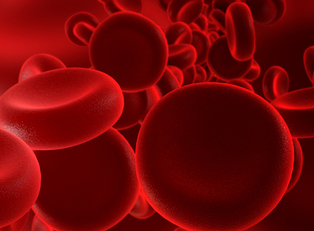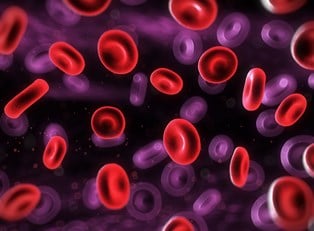Deep vein thrombosis, commonly abbreviated "DVT," is a condition that occurs when a blood clot forms in one or more of the deep veins in your body, usually in your legs. DVT is a serious condition because if a blood clot in your vein breaks loose, it can travel through your bloodstream and block the blood flow to your lungs.
Symptoms
While deep vein thrombosis can sometimes occur without any noticeable symptoms, there are some signs that you can watch out for if you are at risk. These include swelling in the affected leg (or sometimes both legs) and pain in your leg that usually starts in the calf. Pulmonary embolism is a life-threatening condition that can be a complication of DVT. Warning signs for this condition might include unexplained shortness of breath, chest pain, discomfort when taking deep breaths, lightheadedness, dizziness, fainting, rapid pulse, and coughing up blood. If you start experiencing any of these symptoms, seek medical attention immediately.
Causes
Blood clots are usually caused by anything that prevents your blood from circulating properly. Usually, DVT develops if you have a medical condition that affects how your blood clots. It can also occur if you are confined to a bed for a long period of time, such as after surgery or following an accident.
Risk factors
There are many factors that increase your risk of developing deep vein thrombosis. The more you have, the greater your risk. Some risk factors include: inheriting any kind of blood-clotting disorder from someone in your family, prolonged bed rest, injury or surgery, pregnancy, birth control pills, hormone replacement therapy, obesity, smoking, cancer, heart failure, inflammatory bowel diseases (Crohn’s disease or ulcerative colitis), and age.
Treatments
Treatment for deep vein thrombosis is usually aimed at preventing existing clots from getting any bigger or breaking loose and causing further complications. If this is achieved, the goal is to provide treatment that will reduce your risk for developing DVT again in the future. Treatments also include options for relieving symptoms associated with DVT. For example, those who experience pain or other discomforts will be given pain relievers. Common treatments to specifically address the clots of deep vein thrombosis include:
- Blood thinners
The use of anticoagulants, or blood thinners, is the most common treatment for DVT. These drugs reduce your blood’s ability to clot. Blood thinners will not break up existing clots, but they will prevent clots from enlarging, thus reducing the risk of additional clots. There are injectable and oral forms of these drugs. Some common injections include heparin, Lovenox, Fragmin, or Arixtra. Blood thinner pills include Coumadin and Xarelto. - Clotbusters
For more serious cases of deep vein thrombosis, different medications called “clotbusters” or thrombolytics might be prescribed. These drugs are usually administered through an IV to break up existing clots. The side effects of these drugs are very dangerous, as they can cause serious bleeding, so they are typically only used in life-threatening situations. - Filters
Sometimes used in place of medications, a filter can be inserted into a large vein in your abdomen to prevent clots that break loose from lodging in your lungs and causing pulmonary embolism. - Compression stockings
These stockings are worn on your legs from your feet to your knees to prevent swelling that occurs with deep vein thrombosis. The pressure provided by compression stockings reduces the chances that your blood will pool and clot.



